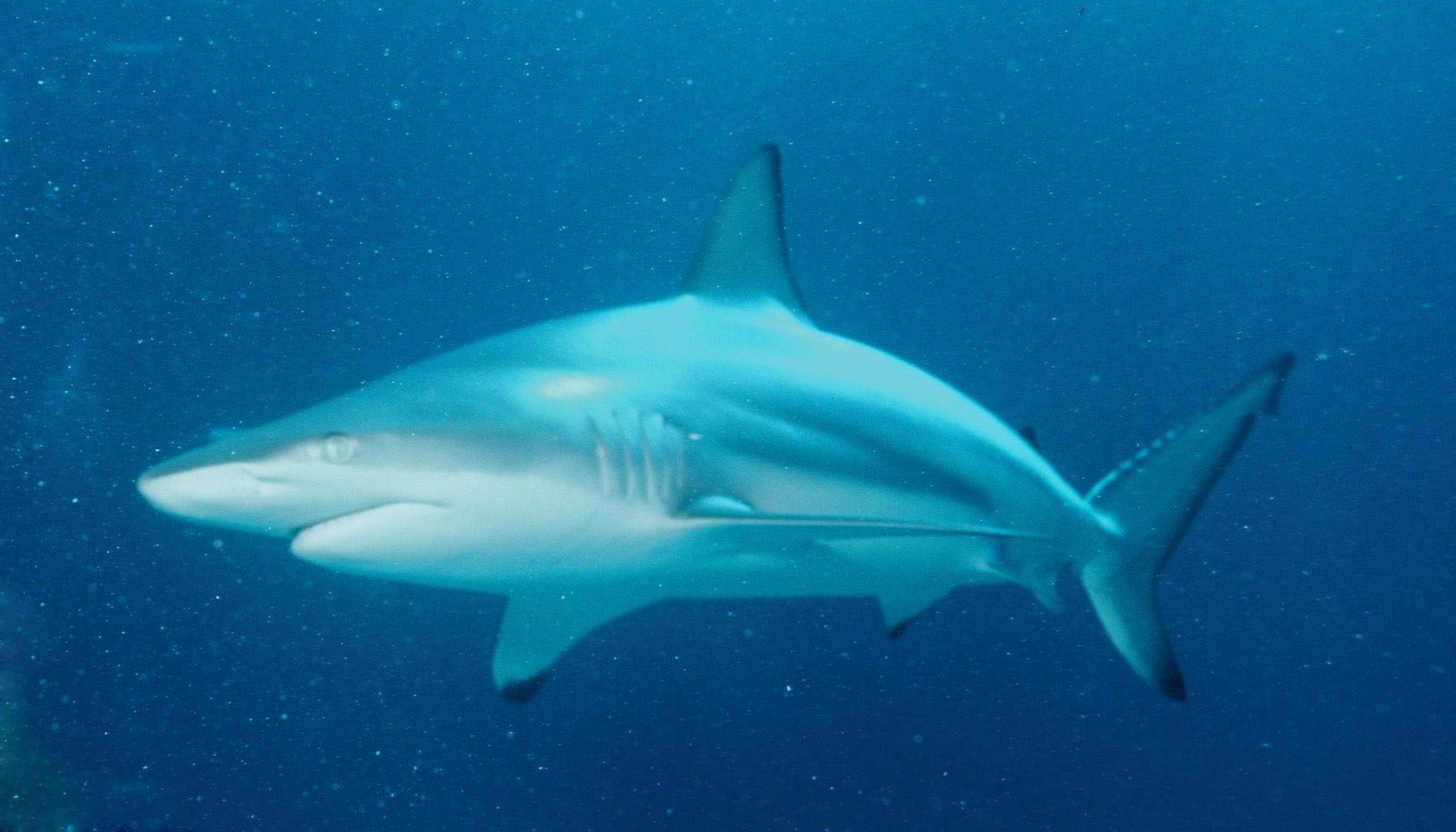Difference between revisions of "AY Honors/Species Account/Carcharhinus limbatus"
JadeDragon (talk | contribs) |
JadeDragon (talk | contribs) (Undo revision 63963 by JadeDragon (talk)) |
||
| Line 1: | Line 1: | ||
{{species id | {{species id | ||
| − | |common_name= | + | |common_name=Blacktip Shark |
|latin_name=Carcharhinus limbatu | |latin_name=Carcharhinus limbatu | ||
| − | |image= | + | |image=Carcharhinus limbatus - Caraibische zwartpunthaai.jpg |
| − | |description= | + | |description= |
| − | + | The Blacktip Shark is the king of the coral reef. Measuring 9 ft. and about 280 lbs. On average, this diminutive shark is the terror of his dominion, and proves that it isn't the size of the shark in the fight, but the size of the fight in the shark that counts. They're known to be extremely aggressive when provoked - and entering his reef qualifies as a provocation. Be wary, scuba divers! [https://www.youtube.com/watch?v=TrNIkUviA1E Interview with aquarium hosting Blacktips] | |
| − | + | |range= | |
| − | + | The blacktip shark has a worldwide distribution in tropical and subtropical waters. In the Atlantic, it is found from Massachusetts to Brazil, including the Gulf of Mexico and the Caribbean Sea, and from the Mediterranean Sea, Madeira, and the Canary Islands to the Democratic Republic of the Congo. It occurs all around the periphery of the Indian Ocean, from South Africa and Madagascar to the Arabian Peninsula and the Indian subcontinent, to Southeast Asia. In the western Pacific, it is found from southern China to northern Australia, including the Philippines and Indonesia. In the eastern Pacific, it occurs from Baja California to Peru. It has also been reported at a number of Pacific islands, including New Caledonia, Tahiti, the Marquesas, Hawaii, Revillagigedo, and the Galápagos. | |
| − | |||
| − | [https://www.youtube.com/watch?v=TrNIkUviA1E Interview with aquarium hosting Blacktips] | ||
| − | |range= | ||
}} | }} | ||
Revision as of 09:41, 15 May 2014
Blacktip Shark (Carcharhinus limbatu)
Where found: The blacktip shark has a worldwide distribution in tropical and subtropical waters. In the Atlantic, it is found from Massachusetts to Brazil, including the Gulf of Mexico and the Caribbean Sea, and from the Mediterranean Sea, Madeira, and the Canary Islands to the Democratic Republic of the Congo. It occurs all around the periphery of the Indian Ocean, from South Africa and Madagascar to the Arabian Peninsula and the Indian subcontinent, to Southeast Asia. In the western Pacific, it is found from southern China to northern Australia, including the Philippines and Indonesia. In the eastern Pacific, it occurs from Baja California to Peru. It has also been reported at a number of Pacific islands, including New Caledonia, Tahiti, the Marquesas, Hawaii, Revillagigedo, and the Galápagos.
Description: The Blacktip Shark is the king of the coral reef. Measuring 9 ft. and about 280 lbs. On average, this diminutive shark is the terror of his dominion, and proves that it isn't the size of the shark in the fight, but the size of the fight in the shark that counts. They're known to be extremely aggressive when provoked - and entering his reef qualifies as a provocation. Be wary, scuba divers! Interview with aquarium hosting Blacktips

